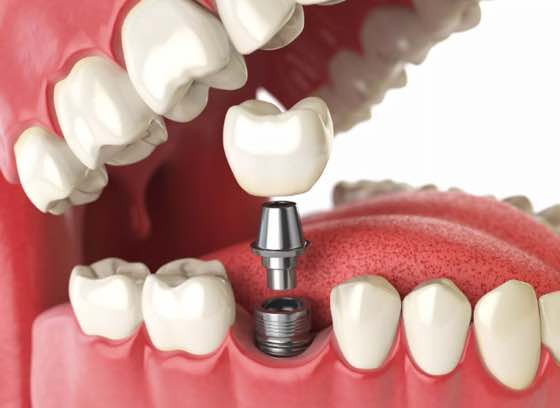Tooth loss is more than just a cosmetic concern. Missing teeth limit the function of your smile and can contribute to bone loss and other oral health issues.
A dental implant is a replacement for the root or roots of a tooth. Like tooth roots, dental implants are secured in the jawbone and are not visible once surgically placed. They are used to secure crowns (the parts of teeth seen in the mouth), bridgework or dentures by a variety of means.
A dental implant consists of a small, screw-shaped titanium post that replaces the missing tooth root. A lifelike custom-made crown is placed over the implant after the healing period.
Your dentist will surgically insert the dental implant into your jawbone. It will be left to heal over the course of a few months before the final crown is attached. During this healing period, the implant fuses to the surrounding bone through a process called osseointegration.
Dental implants can be used in a variety of different cases. These include:
- To replace one missing tooth: If you are missing one tooth, a single implant can be inserted into your jawbone and topped with a lifelike crown.
- To replace all teeth: Dental implants can completely support an entire arch of top or bottom teeth. The implants are fixed into the mouth and can’t be removed. In some cases, as few as four implants can be used to support the new teeth.
- To support removable dentures: Dental implants can make wearing removable dentures more comfortable, effective and healthier. When the removable denture is attached to implants, it can prevent it from slipping and preserves bone.
